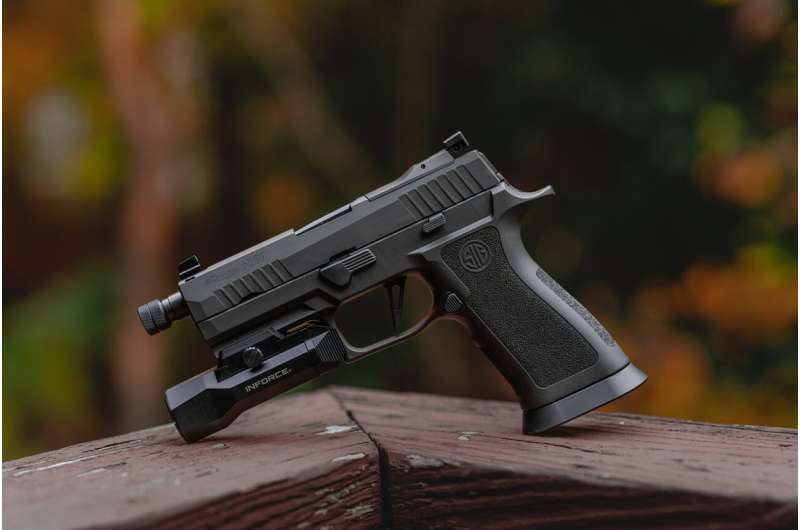This article has been reviewed according to Science X's editorial process and policies. Editors have highlighted the following attributes while ensuring the content's credibility:
fact-checked
peer-reviewed publication
trusted source
proofread
States vary in firearm ownership—as well as the storage and carrying habits of owners

A new study by the New Jersey Gun Violence Research Center at Rutgers assesses the degree to which firearm owners in each state differ from one another with respect to firearm ownership, exposure and use.
Keeping a firearm in the home sharply increases the risk for injury and death. Previous research aimed at characterizing firearm ownership, storage and carrying has focused on national samples, which limits the collective understanding of if and how firearm owning communities throughout the United States differ from one another.
"Americans have a Constitutional right to own firearms, but individuals in different states exercise that right and use their firearms very differently from one another depending on the community they are in," said Michael Anestis, executive director of the New Jersey Gun Violence Research Center and the lead author of the study appearing in the journal Injury Prevention. "Because of this, the risk for firearm injury and death varies widely from state to state."
Anestis said most earlier studies on this topic have collected samples that aren't representative of the population and those that have used optimal samples pre-dated the recent unprecedented surge in firearm sales, which raises questions about their relevance to the current moment.
Rutgers researchers surveyed a representative sample of English-speaking adults from five states: New Jersey, Minnesota, Mississippi, Colorado, and Texas. These states were chosen because they vary widely from one another geographically, politically and culturally and have broadly different firearm policies and rates of gun violence.
The researchers found the states vary sharply with respect to firearm ownership, with Mississippi reporting the highest percentage (45.6 percent) and New Jersey the lowest (13.2 percent). New Jersey residents were less likely to grow up in homes with firearms (18 percent), with the other states exceeding 40 percent and Mississippi at 53.2 percent.
With respect to firearm use, Mississippi and Texas firearm owners stood out as exhibiting more dangerous behavior. For instance, firearm owners in Mississippi and Texas store firearms loaded and carry firearms outside the home more frequently than other firearm owners. Also, Mississippi firearm owners are more likely than others to store their firearms unhidden in vehicles.
Notably, firearm regulations in these states are particularly lenient. In contrast, in New Jersey, where firearm regulations are particularly stringent, firearm owners use gun safes more frequently. Notably, Minnesota firearm owners stood out in that they were less likely to own handguns and more likely to own rifles and shotguns. Minnesota firearm owners were the only group to report that hunting was the most common primary reason for firearm ownership, with all other states listing safety at home as the primary reason.
Given that previous research has shown unsecure firearm storage increases the risk for firearm injury and death and that recent loosening of restrictions on concealed carry resulted in subsequent increases in fatal and nonfatal violent crime, these findings highlight that the policies in place in any given state may have profound effects on the behaviors of the residents and the safety of the communities in those states, Anestis said.
"The decision to bring a firearm into the home is a personal one and different families are comfortable with different levels and types of risk," he said. "What is troubling to me, however, is that some states seem to be fostering situations in which their firearm owning residents feel compelled to use their firearms unsafely—storing them unsecured in their homes or vehicles and carrying them frequently outside their homes—and are perhaps unaware of the risks associated with those behaviors.
Anestis added, "In a nation with overwhelming rates of firearm injury and death, it is beholden upon our policy makers and leaders to ensure that firearm owners are empowered with accurate information about risk and that communities are protected by policies that foster safety. Alienating firearm owners is not the solution, but allowing politics to justify endangering families is not the solution either."
More information: Michael Anestis et al, Regional differences in firearm ownership, storage and use: results from a representative survey of five US states, Injury Prevention (2023). DOI: 10.1136/ip-2023-044878
Journal information: Injury Prevention
Provided by Rutgers University




















